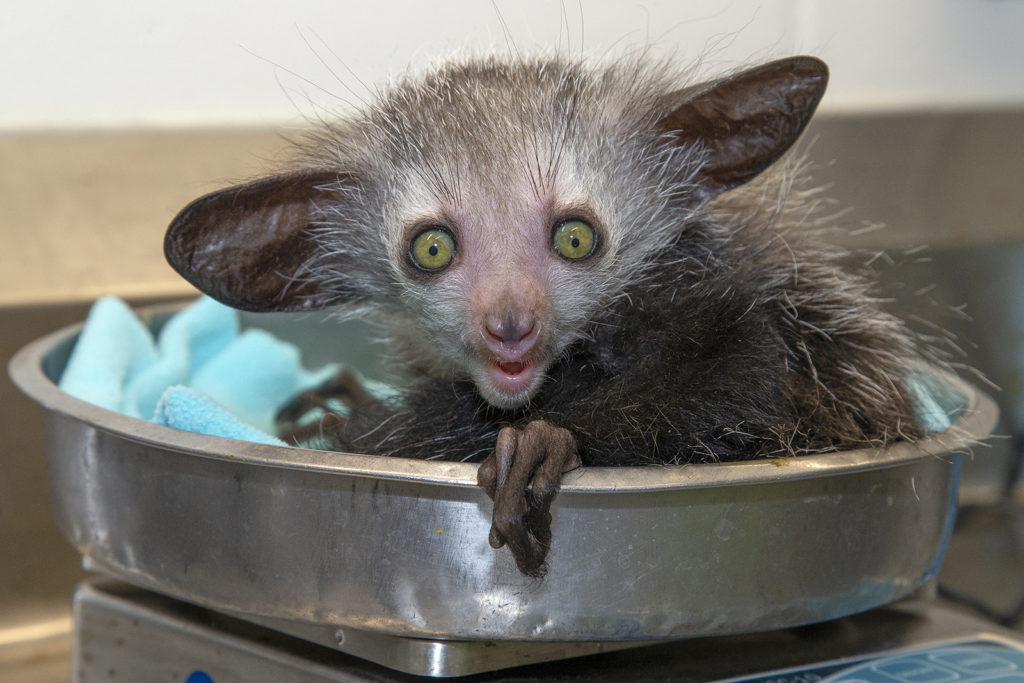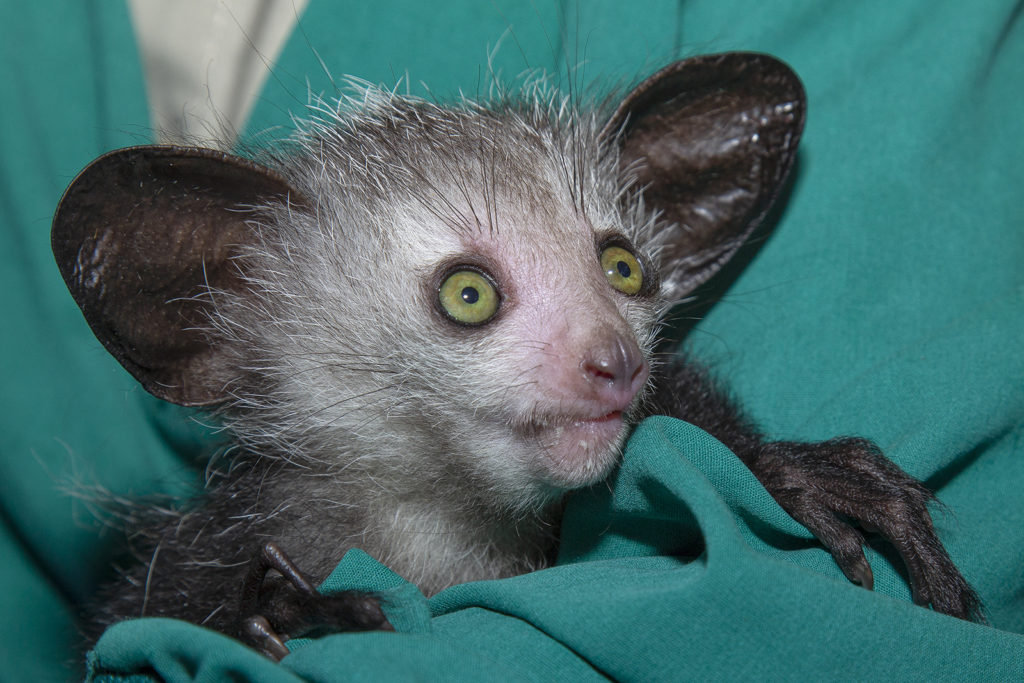
As exciting as anticipation is, it pales in comparison to the actual event. We knew Styx, our female aye-aye was pregnant, and we knew about when she was due. Every day we were on pins and needles, and then…
Generally, when most zoo animals are just starting their day, our aye-ayes have nested down to go to sleep. Normally intent on drowsing away the sun until the cloak of darkness falls in the evening. But this day this past July was special; Styx gave birth to a single infant. Born with a full coat of hair and eyes that opened shortly after birth, he looked like the tiniest mirror version of an adult aye-aye. When we peeked in the nest box and discovered him, Styx was intently cleaning him up. She is a proven mom, having raised another infant just a few years prior. Styx knew her job and so did we.

It’s very important to get a weight on a new aye-aye infant daily for the first few days. This lets the vets and all the animal care staff know if the newborn is thriving or not. The challenge? To do this, we needed to retrieve the infant from under Styx, weigh him, and give him a quick health checkup, then place him back in the nest with Styx none the wiser. Styx was on to us, but was very cooperative with the whole process. He weighed 82 grams at birth and was bright-eyed, active, and alert. He would continue gaining a few grams everyday thereafter.
Now that he was here and doing well, our thoughts turned to a name for him. After a bit of research and discussion, we chose Aloka, which means ‘shadow’ in Malagasy. A fitting name for a creature of the night!

If you have never heard of an aye-aye one would not be surprised. They are a type of specialized lemur, native only to Madagascar. With oversized ears and tail, rodent-like teeth, and some bizarre-looking, unique fingers seemingly made for Halloween, they appear to be a creation of somebody’s overactive imagination. But they are very real, listed as Endangered and in need of our help. Working with a species as rare as this, as weird as this, is exciting. It’s good to be different.
Joe Milo is a senior keeper at the San Diego Zoo.




